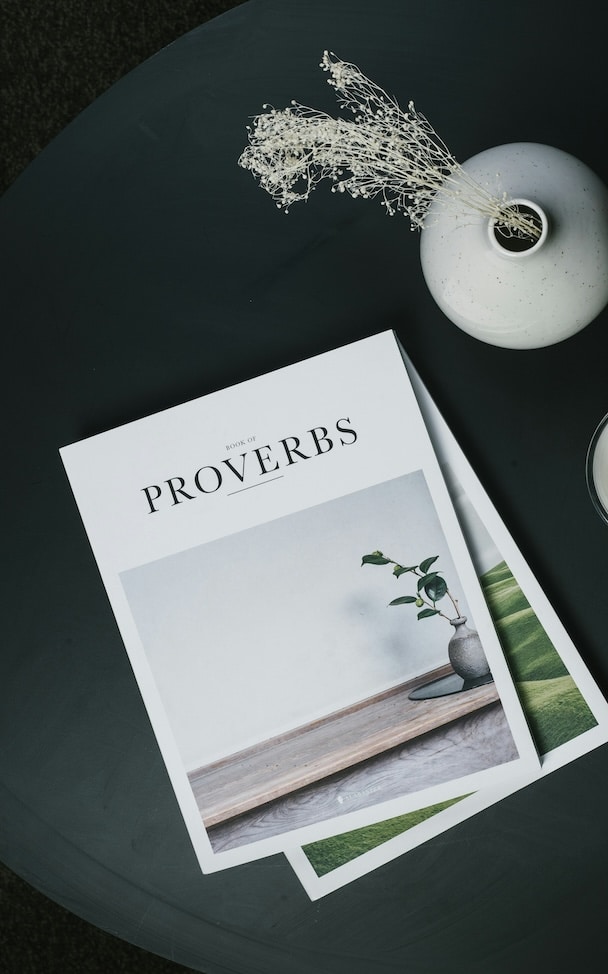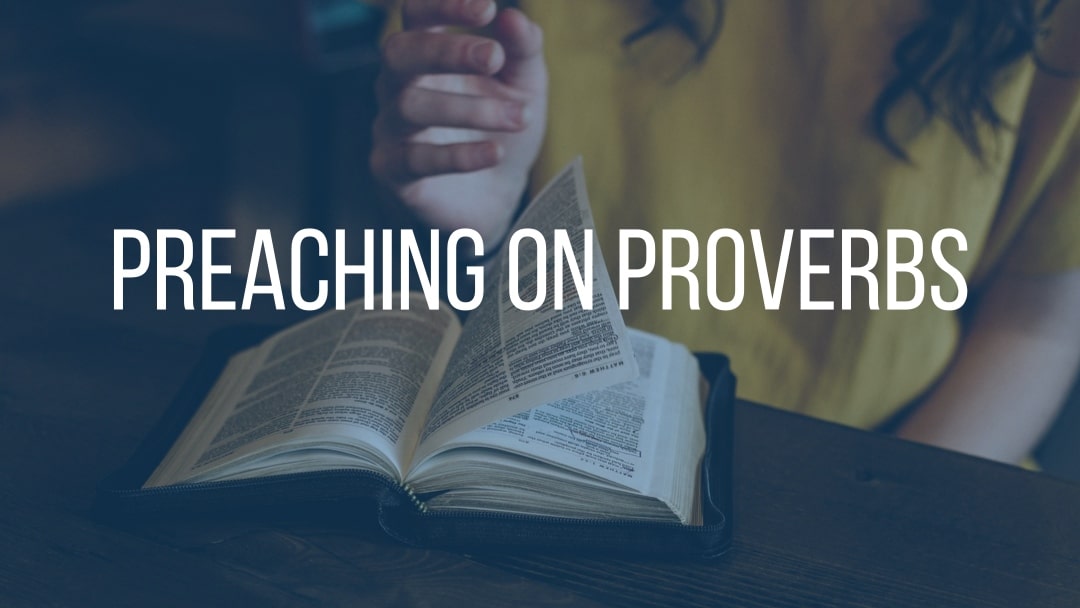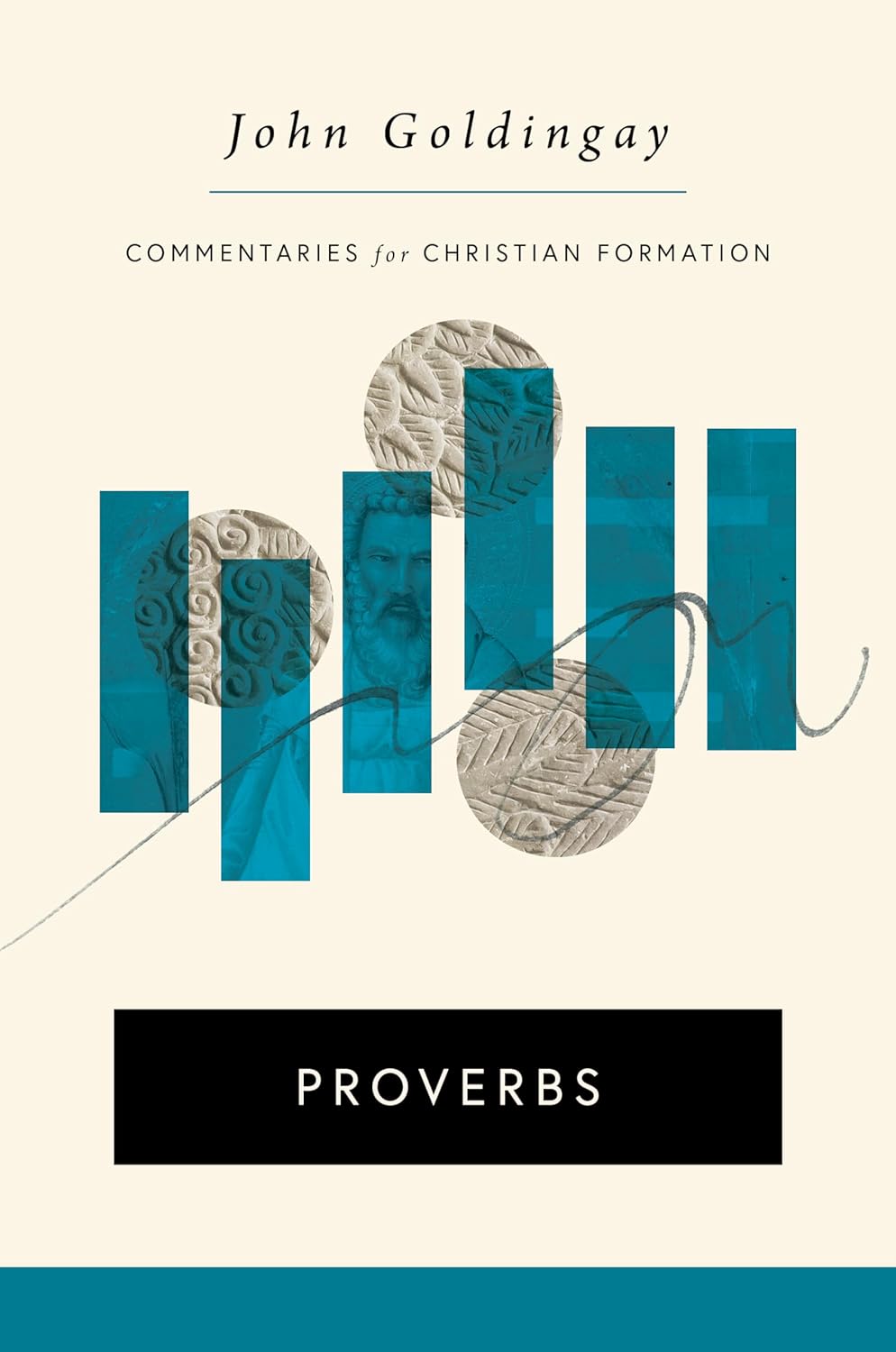How Will We Preach and Teach from Proverbs?
Reading, let alone preaching, from The Book of Proverbs comes with its challenges. Sometimes those sayings can seem just plain obvious and not much help in making real life change. John Goldingay’s new commentary reminds us that what may appear as trite, worn-out advice is harder to practice in real life than it seems. Offering a vivid translation to go with his introduction, comments, and afterword, he invites preachers and teachers to deeper engagement.
Goldingay recently retired as Professor of Old Testament at Fuller Theological Seminary and as Priest-in-Charge of St. Barnabas Episcopal Church, both in Pasadena, California. You can peruse his large body of work at The Goldingay Bible Clinic (shared with wife Kathleen). There he says: “For me, being a professor was a subset of being a pastor.”
I found five features of the commentary that translate into guidance for preaching and teaching.
John Goldingay, Proverbs: Commentaries for Christian Formation. Grand Rapids, MI: Eerdmans, 2023. Xvii + 477 pages.
Focus on the Main Theme–Fear of the LORD That Leads to Faithful Living
The prologue of Proverbs 1:1–10 covers a lot of ground, but the book’s purpose is clear in the second verse. Here’s Goldingay’s translation: “For getting to know wisdom and discipline, for gaining discernment into sayings that are discerning.” We learn wise and disciplined living by understanding sayings that deliver understanding.
He explains by a comparison with Jeremiah—whereas the prophet is given words (dibre) that are direct and straightforward, The Book of Proverbs contains sayings (mishle) that require thought and reflection. Most English translations call the sayings “proverbs,” but Goldingay chooses “verses” to preserve the broader meaning; mishle can include parables (as the Septuagint translates), as well as “satire” and “enigmas” (Prov 1:6).
What is wisdom? Verse 7 answers, and here the standard translation, “fear of the LORD” is rendered “awe for Yahweh.” Goldingay contrasts reverence, a “positive deferential submission” with “fearful anxious fright. If one has turned from faithfulness and uprightness, being afraid of God is appropriate and wise. But in the Scriptures the expression usually refers to a positive awe that is key to spirituality and wisdom.” (p. 26)
The outcome of wise living is set off in verse 3, the center of the prologue: Goldingay’s translation, “faithfulness in the exercise of authority and honesty,” offers more guidance than the more abstract, “righteousness, justice, and equity.” His comments underline the relational aspects of this triad: personal virtues are visible in the way we treat others.
Learning to read these “verses”–to learn wise living, in the awe of Yahweh–keeps our preaching from turning into one more source of self-help advice. There’s plenty of it out there that people find attractive. We can and should invite our listeners to grow into deeper knowledge of God.
Consider the Shape of the Book
Goldingay proposes a simple outline of the book in three parts of similar length (A, 1:1–9:18; B, 10:1–22:16; C, 22:17–31:31). The first, A, a series of instructions, commends the pursuit of wisdom as an introduction to the collection of sayings. The second, B, presents the two-line sayings that most people think of as stand-alone proverbs, but Goldingay highlights themes that thread throughout. The third, C, combines features of the first two, collecting short sayings and longer instructions. Boundaries are not hard and fast, for B sayings and extended units like those in C both appear in the A section.
These categories help readers perceive how each section’s literary presentation works. For example, the exhortation delivered by father and mother to young son in Proverbs A “motivates people to take seriously the insight and exhortations expressed in Proverbs B and C.” (p. 20)
Both Proverbs (3:9–10) and Jesus (Matt. 6:25–33) affirm the prosperity gospel that wise living bears fruit–but that material good is to be saved and shared, not squandered. And wisdom is better than gold, silver, and jewels, so material goods do not take first place in life. (pp. 52–53) Other themes important for today: marital faithfulness (Prov 5); antisocial behavior of bad borrowing and bad speaking (Prov. 6); and more urgent warnings about adultery, literal and spiritual (Prov 7).
Wisdom is personified throughout section A; present before anything was made, in chapter 8 she celebrates the glories of creation, particularly the human person. Jewish and Christian tradition may have likened this persona of Ms. Wisdom to Torah and Jesus respectively, but “they are not Proverbs’ concern” (p. 123). Proverbs is less interested in theological discussion (like Christology) than in right living because, Goldingay asserts with a zinger, “The first is less demanding.” He deftly shows how the final contest of persuasion in chapter 9 summarizes and clarifies the contrast between discipline and dissipation; it crystalizes the major life choice of wisdom or folly.

Look at Single Verses and Clusters
Along with his designation of Proverbs A (Intro) B (Sayings) and C (Hybrid), Goldingay notes that the Hebrew text marks sixty smaller divisions that guide his own study of smaller clusters. Some interpreters propose elaborate designs of chiastic and other arrangements of the individual sayings, but Goldingay is content to show how repetitions of common words, phrases, and images can indicate a thematic unit.
Appreciating the literary context of these “verses” means not only looking for outlines—Goldingay provides one after each translation and before his comments–but asking how the parts relate to one another. He imagines a gathering of “theologian-scribes” with their collections, arranging some in pairs, others in clusters: “I shall seek to identify sequences or clusters of sayings and treat them as the interpretive context for individual sayings, without assuming that I have identified the intention of an unknown compiler” (p. 136).
Unlike commentaries that offer verse-by-verse explanations or gather verses under topics, Goldingay discovers and explains the counsel and recommendations of the clusters. Truthful speech, fair dealing, peaceful living with neighbors–these all draw contrasts between faithful and faithless living. Sometimes the clusters correspond to chapter markings, other times not. If the poetry of a proverb or cluster can be understood in more than one way, Goldingay offers his preferred reading while mentioning alternatives.
I appreciated Goldingay’s astute observations and careful analysis. He counted thirty-three occurrences of “heart” in chapters 1–13. He then observed that Proverbs A focuses on “heart” as the life of the mind while Proverbs B has more to say about the ‘inner life.” That’s why he translates 14:10, “The inner being knows its own bitterness and its happiness an outsider will not share.” What is this saying’s guidance for us? “If someone wants to understand another person’s anger or sorrow, the first step is to assume that they don’t understand” (p. 194). Likewise, the happy person may do well to curb their enthusiasm. That emphasis on the inner being (heart/mind) takes center stage in chapter 15; combined with the references to Yahweh in 15 and 16, it becomes the centerpiece of the whole of section B.
Find Analogies to Ancient Settings and Themes
As mentioned above, the third section C collects single-saying proverbs like section B, but also has longer sections on specific topics like section A. The “Words of the Wise” in 22:17–24:34 contain more imperatives than section B and resemble Egyptian wisdom writings like Amenemope. How do we explain the similarities? Leaving open the possibilities, Goldingay concludes that Proverbs integrated wisdom from other cultures the way Genesis incorporated Babylonian creation stories and Paul spoke of common knowledge of God; “thus Proverbs could adapt insights from them while also setting these insights into the context of Yahweh’s relationship with Israel” (p. 297).
Moving toward the scene of a royal court, the “Words of the Wise” use humor in laying out the social situations young workers may find themselves (like business breakfasts in today’s corporate culture). Citing Richard Foster’s book on Sex, Money, and Power, Goldingay shows how these temptations and disciplines play out. A section on wise moderation in drinking, eating, and sex is followed by a charge to care for one’s parents (23:19–24:2). Here are ways to make one’s parents glad (see Prov. 10:1; would that Solomon took that to heart).
The commentary helpfully points out the riddles that proliferate, especially in chapter 30. Answers are offered based on context. For example, are we to try and understand the way of a man with a woman in 30:19 on its own, or connect it with the adulterous woman who eats, wipes her mouth, and admits no wrong (30:20)? “Maybe the lines [of 30:19] simply wonder at these mysteries, or maybe they lament the way seduction happens.” (p. 397) Since the chapter is about the ways of a greedy society that is never satisfied, Goldingay opts for the latter:
And he observes that Proverbs 31 juxtaposes a mother’s “discipline” (using the same translation for earlier occurrences about correction) with a positive model. Lemuel’s mother offers her wise counsel to a king vulnerable to temptation. But the “virtuous woman” of so many Mother’s Day sermons is an ideal portrait to whom no one should be compared. Instead, Goldingay reads this praise of the “resourceful woman” as “an imaginative account of someone who embodied much of the character ideal that the book has set forward.” (p. 408) She is wise in that she shows faithfulness to her household and community in ways King Lemuel might not.

Ask Questions That Draw Themes Together
A conclusion takes on the questions that might come to a reader: “What is the link between actions we take and events that follow? How does Proverbs interrelate with the rest of the Scriptures? How does Proverbs interact with traditional and modern study of virtues?” Goldingay’s answers offer still more insightful handles to help interpreters. His scholarship is wide-ranging and up to date, and he does not shy away from current issues and questions.
In sum, this commentary won’t dive into the deep end of exegetical matters, nor will it provide ready-made sermon illustrations. What it will do is integrate careful exegesis, down to earth theology, and common sense to stimulate the reader’s own study for preaching, teaching, and personal growth. No single commentary can provide all that an interpreter needs, but if I had to choose, it would be this one.

Paul Koptak is Professor Emeritus of Communication and Biblical Interpretation at North Park Theological Seminary in Chicago. He worked in both fields for his joint PhD from Northwestern University and Garrett Evangelical Seminary. Likewise at North Park, Paul taught introductions to preaching and the Old Testament along with electives in preaching from Genesis and Proverbs.
Paul is author of The New International Version Application Commentary: Proverbs, and Circles in the Stream– Index, Identification, and Intertext: Reading and Preaching the Story of Judah in Genesis 37–50. He plays dobro and lap steel guitars, performing around the area of his home near Asheville, North Carolina.
Don’t Miss
The Latest From Our Blog
New Site Launches Tomorrow!
Watch this Space! Tomorrow (May 29) is the official launch of the new The Pastor's Workshop site! Return to this blog tomorrow morning for a post highlighting the new features and explaining how subscribers can get on and start using the site! Here are some new...
How You Can Prep for Pentecost
This was originally posted on May 12, 2016 on https://huffpost.com Pentecost Came Like Wildfire I'm lying on an ice pack early this morning, doing my back exercises and listening to Pray as You Go, a tool for meditation, with monastery bells, music, and a Bible...
Sacred Spaces: the Church Forests of Ethiopia
Let's Go to Ethiopia! Here’s a fun exercise with a spiritual payoff. Go to Google Maps and view aerial images of the South Gondar zone of Ethiopia. Use this button:When the page loads, you'll see a light brown countryside, mostly farmland. There are thin lines of dark...





